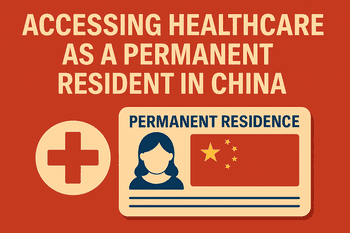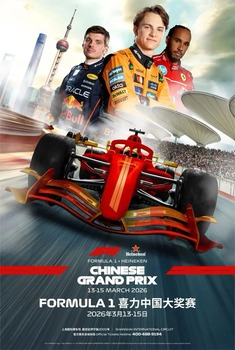
For expats who have secured Permanent Residence (China Green Card), navigating China’s complex healthcare system requires specific knowledge and strategies.
While permanent residents enjoy greater healthcare access than temporary visa holders, understanding the nuances of public insurance enrollment, regional variations, and digital healthcare options is essential.
This comprehensive guide explores the latest healthcare benefits available to permanent residents in 2025, enrollment procedures, and practical strategies for accessing quality medical care across China.
China’s Healthcare System in 2025: A Multi-Tiered Approach
China operates a multi-tiered healthcare system with significant variations between urban and rural areas, as well as across different regions.
According to the National Healthcare Security Administration (NHSA), China’s healthcare expenditure reached ¥7.82 trillion in 2024, with public insurance covering approximately 95% of the population.
Hospital Tier System
| Hospital Level | Description | Typical Services | Permanent Resident Access |
|---|---|---|---|
| Tier 3 (Top) | Comprehensive medical centers in major cities | Specialized treatments, advanced surgeries, research | Full access with longer wait times unless using VIP services |
| Tier 2 | District/county-level hospitals | General surgery, specialized departments, emergency care | Good accessibility, moderate wait times |
| Tier 1 | Community health centers, township clinics | Basic care, preventive services, chronic disease management | Excellent accessibility, shortest wait times |
| Private/International | Foreign-operated or joint venture facilities | Western-style care, English services, luxury amenities | Accessible but expensive; typically requires private insurance |
Source: China National Health Commission Hospital Classification Standards, 2025
Public vs. Private Healthcare Options
The healthcare landscape for permanent residents spans both public and private sectors:
Public Healthcare
- Coverage: Government-funded hospitals provide affordable medical care with standardized pricing
- Accessibility: 35,000+ public hospitals nationwide with 90% of medical services delivered
- Language: Limited English services except in Tier 3 hospitals in major cities
- Cost-efficiency: 70-85% lower costs than private options with insurance
Private and International Healthcare
- Service quality: Shorter wait times (average 15-30 minutes vs. 2-4 hours at public hospitals)
- Language support: Multilingual staff in 92% of international facilities
- Appointment systems: Advanced booking with specific time slots
- Cost: 5-10x more expensive than public options
Source: China Healthcare Association Annual Report, 2025
Health Insurance Options for Permanent Residents in 2025
Permanent residents have access to multiple insurance options, with eligibility and benefits varying by region and employment status.
Public Insurance Programs Available to Permanent Residents
| Insurance Type | Eligibility | Coverage Level | Monthly Contribution (2025) | Annual Deductible |
|---|---|---|---|---|
| Urban Employee Basic Medical Insurance (UEBMI) | Employed permanent residents | 70-85% of inpatient costs; 50-70% of outpatient | 8-12% of salary (shared with employer) | ¥1,500-3,000 |
| Urban-Rural Resident Basic Medical Insurance (URRBMI) | Self-employed, unemployed, or retired permanent residents | 60-70% of inpatient costs; 40-60% of outpatient | ¥300-800 per person annually | ¥2,000-4,000 |
| Supplementary Medical Insurance | UEBMI or URRBMI participants | Additional 10-20% coverage for specific conditions | ¥50-200 monthly | Varies by plan |
Source: National Healthcare Security Administration, 2025 Guidelines
Regional Variations in Healthcare Coverage
Coverage and contribution rates vary significantly across regions:
| City/Region | UEBMI Reimbursement Rate | URRBMI Reimbursement Rate | Special Benefits for Permanent Residents |
|---|---|---|---|
| Shanghai | 85% inpatient; 70% outpatient | 70% inpatient; 60% outpatient | Fast-track enrollment; digital healthcare integration |
| Beijing | 80% inpatient; 65% outpatient | 65% inpatient; 55% outpatient | Special clinics for international patients |
| Guangzhou | 75% inpatient; 60% outpatient | 60% inpatient; 50% outpatient | TCM integration with Western medicine |
| Shenzhen | 80% inpatient; 65% outpatient | 65% inpatient; 55% outpatient | Tech-enabled healthcare services |
| Tier 2 Cities | 70-75% inpatient; 50-60% outpatient | 55-65% inpatient; 40-50% outpatient | Varies by location |
Source: China Health Insurance Research Institute, 2025
Enrollment Process for Permanent Residents: Step-by-Step Guide
The enrollment process for public health insurance has been streamlined for permanent residents in 2025, but still requires specific documentation and procedures.
Required Documentation for Public Insurance Enrollment
- Valid Permanent Residence Card (Five-Star Card)
- Passport
- Employment contract (for UEBMI) or proof of residence (for URRBMI)
- Recent photographs (typically 2)
- Tax payment records for the previous year
- Completed application form (available online or at local service centers)
Enrollment Procedures by Employment Status
For Employed Permanent Residents (UEBMI):
- Employer initiates the registration process through the company’s HR department
- Submit required documentation to employer
- Employer registers with local Social Security Bureau
- Receive insurance card within 15-30 working days
- Coverage begins on the first day of the month following successful registration
For Self-Employed or Unemployed Permanent Residents (URRBMI):
- Visit the local Healthcare Security Administration office in your district
- Submit application and required documentation
- Pay the annual premium (can be done in installments in some regions)
- Receive insurance card within 20-40 working days
- Three-month waiting period typically applies before full benefits activate
Source: Shanghai Municipal Human Resources and Social Security Bureau, 2025
Navigating Healthcare Facilities as a Permanent Resident
Hospital Registration Process
The typical process for accessing healthcare services in China involves:
- Registration (挂号 – Guàhào): Register at the hospital’s outpatient department or via online platforms
- Triage: Brief assessment to determine which department you need
- Specialist consultation: Meet with the appropriate doctor
- Diagnostics: Complete any required tests (often same-day)
- Treatment plan: Receive prescription or treatment recommendations
- Payment and pharmacy: Pay for services and obtain medications
Digital Healthcare Access in 2025
China’s digital healthcare ecosystem has expanded significantly, with permanent residents now able to access:
| Digital Service | Functionality | Availability to Permanent Residents | Required Setup |
|---|---|---|---|
| Health QR Code | Digital health record, appointment booking, payment | Fully available with Five-Star Card | National healthcare app linked to permanent residence ID |
| Online Consultations | Remote doctor appointments, follow-ups | Available on major platforms | Registration with permanent residence ID |
| Electronic Prescriptions | Digital prescription delivery to pharmacies | Available in 85% of Tier 1-2 cities | Healthcare app registration |
| Health Records Access | View medical history, test results | Available with some regional limitations | Hospital account linked to permanent residence ID |
Source: China Digital Healthcare Development Report, 2025
“The integration of permanent residents into China’s digital healthcare ecosystem represents a significant advancement in healthcare accessibility. The Five-Star Card now functions as a digital health passport, enabling seamless access to both online and offline medical services.”
— Dr. Zhang Wei, Director of International Patient Services, Peking Union Medical College Hospital
Practical Healthcare Navigation Tips for Permanent Residents
Finding English-Speaking Healthcare Providers
- Hospital International Departments: Major public hospitals in Tier 1 cities maintain international wings with English-speaking staff
- Doctor Database: The International Medical Provider Network maintains a searchable database of English-speaking doctors
- WeChat Mini-Programs: Several platforms like “ExpatHealth” and “DoctorPlease” connect patients with multilingual providers
Managing Prescription Medications
- Medication Availability: Not all foreign medications are available in China
- Prescription Transfers: Bring detailed medical records for chronic conditions
- Generic Alternatives: Chinese pharmacies often offer generic alternatives to Western medications
- Medication Import Regulations: Permanent residents can import up to 3 months’ supply of prescription medications for personal use
Emergency Medical Services
- Emergency Number: 120 for ambulance services nationwide
- Emergency Vocabulary: Keep a card with essential medical terms in Chinese
- Hospital Emergency Departments: Tier 2-3 hospitals provide 24/7 emergency services
- Medical Evacuation: Consider supplementary insurance for critical care evacuation if living outside major cities
Source: China Foreign Residents Healthcare Guide, Ministry of Health, 2025
Case Studies: Real Experiences of Permanent Residents
Case Study 1: Accessing Specialized Care in Shanghai
“As a permanent resident with UEBMI insurance, I needed cardiac treatment at Shanghai Zhongshan Hospital. I registered through the hospital’s WeChat platform, which recognized my Five-Star Card number. My out-of-pocket cost for the entire treatment, including a minor procedure, was approximately ¥4,500, with insurance covering 80% of the ¥22,500 total. The same treatment would have cost over ¥100,000 at an international hospital.”
— Michael L., American permanent resident, Shanghai
Case Study 2: Managing Chronic Conditions in a Tier 2 City
“Living in Hangzhou with URRBMI insurance, I manage diabetes through a combination of public healthcare and private consultations. My quarterly check-ups at a public hospital cost around ¥200 after insurance, while my monthly medications cost ¥300. I occasionally use private telemedicine services for convenience, which aren’t covered by insurance but provide English-language support.”
— Sarah K., British permanent resident, Hangzhou
Recent Healthcare Reforms Affecting Permanent Residents
The 2023-2025 healthcare reform initiatives have introduced several changes beneficial to permanent residents:
- Streamlined Enrollment: Reduced waiting periods for permanent residents enrolling in public insurance
- Digital Integration: Enhanced integration of permanent residence cards with healthcare systems
- Medication Coverage Expansion: Increased number of imported medications covered by public insurance
- Telemedicine Regulations: New frameworks allowing permanent residents to access cross-border telemedicine services
Source: State Council Healthcare Reform Office, 2025 Policy Brief
Supplementary and Commercial Insurance Options
Many permanent residents opt for supplementary coverage to enhance their healthcare options:
| Insurance Type | Coverage Focus | Annual Premium Range | Benefits for Permanent Residents |
|---|---|---|---|
| International Health Insurance | Global coverage, evacuation, premium facilities | ¥20,000-80,000 | Worldwide coverage, direct billing with select hospitals |
| Local Commercial Insurance | Enhanced coverage at Chinese facilities | ¥5,000-15,000 | Higher reimbursement rates, VIP services at public hospitals |
| Critical Illness Insurance | Lump-sum payment for serious conditions | ¥2,000-10,000 | Financial protection for major health events |
| Outpatient-Focused Plans | Enhanced coverage for routine care | ¥3,000-8,000 | Reduces out-of-pocket costs for frequent care |
Source: China Insurance Regulatory Commission, 2025 Consumer Guide
Healthcare Rights and Legal Protections
Permanent residents should be aware of their healthcare rights and protections:
- Equal Treatment Principle: By law, healthcare providers cannot discriminate against permanent residents
- Medical Dispute Resolution: Access to the same medical arbitration system as citizens
- Privacy Protections: Medical data protected under China’s Personal Information Protection Law
- Complaint Mechanisms: Each hospital has a patient rights office (患者权益办公室) for addressing concerns
Source: China Patient Rights Association, 2025 Guidelines
Conclusion
As a permanent resident in China, you have significantly better healthcare access than temporary visa holders, though navigating the system still requires preparation and knowledge.
By understanding your insurance options, regional variations, digital healthcare tools, and practical navigation strategies, you can access quality healthcare at reasonable costs.
For optimal healthcare experiences:
- Enroll in the appropriate public insurance program based on your employment status
- Consider supplementary commercial insurance for enhanced coverage
- Utilize digital healthcare platforms for convenience and efficiency
- Establish relationships with healthcare providers who understand your needs
- Maintain comprehensive records of your medical history and treatments
With proper preparation and understanding of the system, permanent residents can effectively navigate China’s healthcare landscape and receive quality medical care throughout their stay.


